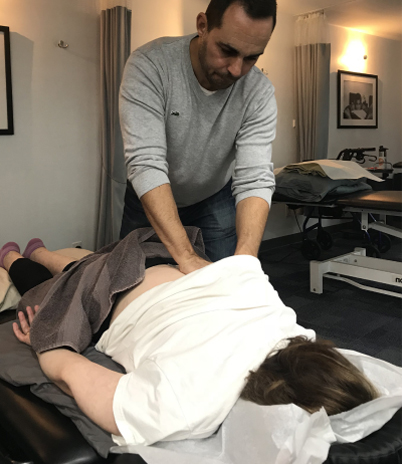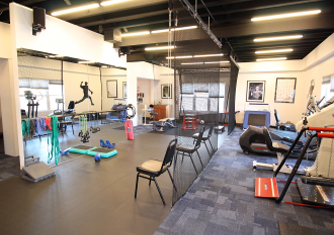Vestibular Rehabilitation Therapy (VRT) is an exercise-based program intended to alleviate both the primary and secondary causes associated with vestibular disorders. Symptoms and consequences of vestibular disorders can include vertigo, dizziness, gaze instability, imbalance and fall risk. Dizziness can be described as feeling unsteady or imbalanced, disoriented, ill or nauseous, lightheaded, faint, and the sensation of moving, spinning, swaying, tilting, floating, and whirling, which all fall under the term Vertigo. These feelings or sensations can occur with or without probable cause while standing still, lying down or changing body positions. They can be constant in duration or episodic, lasting a few seconds, minutes or even hours. While vestibular disorders are mainly linked to inner ear dysfunction, dizziness can also be a side effect of medications, a sign of cervical instability, or a more serious issue such as a brain or a heart condition.
VRT sessions all begin with a comprehensive clinical assessment conducted by a physical therapist to collect a detailed medical history of the patient’s symptoms and any triggers leading up to the dizziness episode. The physical assessment can include all or part of the following areas:
• Balance and coordination on hard and soft surfaces
• Posture
• Leg strength and flexibility
• Gait patterns and stride
• Visual stability and mobility
• Neck mobility and muscle strength
• Arm mobility and strength
• Spine range of motion
• Positional testing, including an inner ear exam
If underlying conditions are suspected, laboratory testing and image studies may be ordered for further analysis. While VRT may be the only line of treatment needed, some patients may require more invasive measures such as surgery for significant relief.
Brooklyn Body Works Physical Therapy is staffed with a professional and caring team of experts with clinical experience in Vestibular Rehabilitation Therapy. Browse through our physical therapist profiles to learn how they can help you with restoring functionality.
Vestibular Rehabilitation Therapy offers substantial benefits to patients whether used as a standalone therapy or if used in combination with other treatments such a surgery. VRT can improve the ability to stabilize vision/gaze and control eye movement during head movement, enhance postural stability, symptoms of vertigo and dizziness, body strength, and neck motion/associated pain or strength. In addition it can decrease the risk of fall, improve balance, restore body movement/function, and increase steadiness/ the ability to walk on different surfaces.
Patients who received support for postural stability, reported learning how to use other movement strategies, visual references, and sensory information such as touch, to assist with their vestibular recovery.
Vestibular Rehabilitation Therapy can include techniques or exercises such as:
Brooklyn Body Works Physical Therapy began as an idea to bring the highest quality physical therapy to all people in our community. We wanted to offer the best that NYC has in health care while not marginalizing people based on socioeconomic boundaries (race, income, language, religion, etc). We offer a “concierge style service” and continue to accept many commercial insurances, medicare and even medicaid policies.



Since this is a physical therapy session which will require a physical examination and therapeutic exercise (varies by patient), we ask all our patients to come prepared. Please come dressed in loose fitted clothing that will allow for easy mobility, comfort, and access to the area of complaint. In addition we recommend sneakers with soles that grip to prevent slips or falls.
The need for a referral depends on what type of insurance you have. Most insurance plans do not require one, however some insurances do. For example, if you have HIP, you will need a referral from your primary care physician. We ask that you check to see what your health insurance plan requires prior to your initial visit. If you are unsure, please contact our front office and we’ll do our best to determine whether or not you require a referral.
To get in contact with us, click on the following link to view information pertaining to each office.
Each patients case and diagnosis is unique and requires the development of an individualized plan of care. Your physical therapist will give you an estimate of the number of sessions needed to reach a level of “feeling better”, during your initial evaluation.
Over time the number of visits may increase or decrease from the initial estimate, based on the progress made.
Brooklyn Body Works Physical Therapy accepts many of the available major insurance plans as well as alternate payment options, including cash/self-pay, to make our services accessible and affordable. Please visit the link below to view all information pertaining to Payment Options.